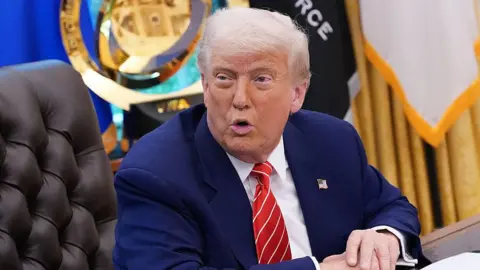Donald Trump’s administration has recently issued a comprehensive travel ban impacting nationals from twelve countries. This proclamation, signed at the White House, was framed as an essential measure to protect national security. The implications of this ban are significant, prompting discussions and concerns about its legal and social ramifications.
**Overview of the Travel Ban**
Trump’s presidential order prohibits entry into the United States for individuals from twelve named countries, a move that marks a renewal of similar measures he enacted during his initial term in office in 2017. The countries impacted by this ban include Afghanistan, Myanmar, Chad, the Republic of the Congo, Equatorial Guinea, Eritrea, Haiti, Iran, Libya, Somalia, Sudan, and Yemen. The administration noted that this list could be revised in the future depending on the progress of security improvements in these nations and as new threats emerge across the globe.
**Reasoning Behind the Ban**
In his rationale for the travel ban, Trump highlighted the necessity for what he termed “common sense restrictions” aimed at shielding American citizens from perceived threats posed by foreign individuals who may not have undergone sufficient vetting. A recent attack in Boulder, Colorado, which injured twelve people and was carried out by an individual identified as an Egyptian national, was cited as a prime example of the dangers that the ban seeks to mitigate.
During a video posted to his Truth Social platform, Trump emphasized this incident to reinforce his position that the nation faces grave risks from foreign actors who have the potential to cause harm. Such declarations underscore the administration’s linkage of national security to immigration policies and the systemic vetting processes currently in place.
**Countries Subject to Partial Restrictions**
In addition to the complete travel ban on the aforementioned twelve nations, seven additional countries—namely Burundi, Cuba, Laos, Sierra Leone, Togo, Turkmenistan, and Venezuela—are facing partial travel restrictions. This tiered approach suggests a differentiated risk assessment concerning nationals from these countries, allowing for a nuanced strategy regarding immigration policy.
**Reactions and Backlash**
The travel ban has been met with immediate backlash both domestically and internationally, anticipated to trigger a wave of legal challenges. Somalia, one of the affected nations, issued a statement emphasizing its commitment to partnership with the United States to resolve any security concerns, emphasizing the enduring relationship between the two nations. Conversely, Venezuela’s Interior Minister Diosdado Cabello expressed strong disapproval, warning that being in the U.S. poses risks not just for Venezuelans but for everyone.
Critics within American politics, particularly from the Democratic Party, quickly condemned the ban, linking it to Trump’s previous controversial policies, which were often perceived as discriminatory. Prominent figures such as Congresswoman Pramila Jayapal and Congressman Don Beyer remarked on the ban as a further escalation of isolationist sentiment and a betrayal of foundational American values.
**Historical Context: The 2017 Ban**
To understand the ramifications of the latest travel ban, it is essential to consider its predecessor in 2017, which faced substantial scrutiny for being characterized as a “Muslim ban,” given that six of the eight countries included primarily Muslim populations. This earlier order witnessed numerous legal challenges, resulting in multiple revisions before being implemented fully in 2018. The ultimate repeal of this ban by President Joe Biden in 2021, who labeled it as “a stain on our national conscience,” illustrates the polarizing nature of such travel restrictions.
In conclusion, Trump’s new travel ban not only reflects ongoing national security concerns but also sparks a broader dialogue about immigration, global relationships, and civil rights. As it unfolds, the legal context and public discourse surrounding this policy will remain pivotal in shaping both the trajectory of U.S. immigration policy and the nation’s identity on the global stage.



